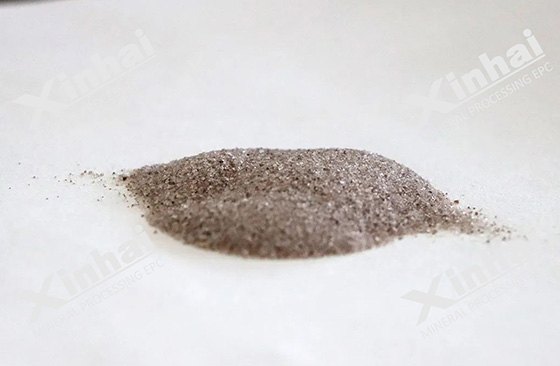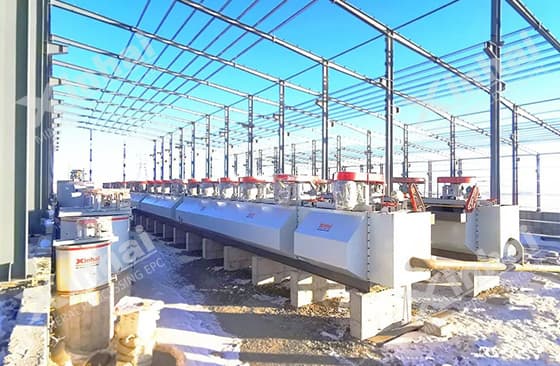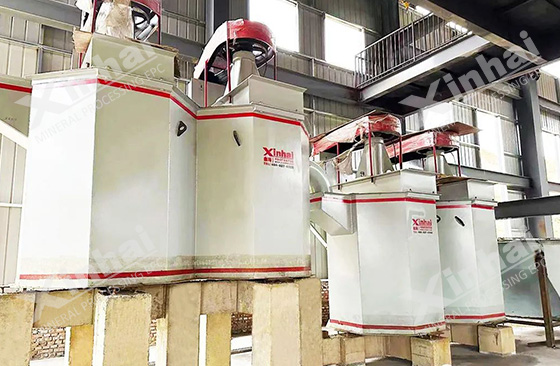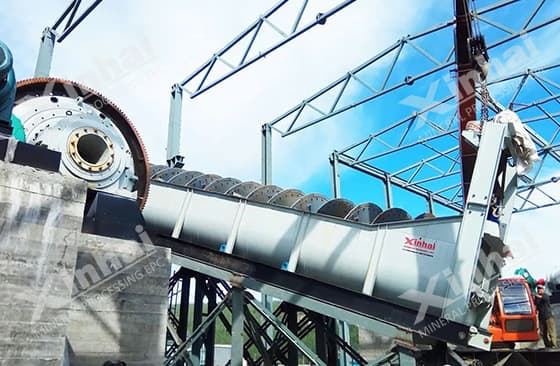
Quartz sand is a common and widely used non-metallic raw material. Due to the needs of its application field, the requirements for the removal of impurities in quartz sand are relatively high in the process of quartz sand mineral beneficiation. In this article, we will take you through the separation process of quartz sand and its common gangue minerals. Common gangue minerals in quartz sand mineral include metallic minerals such as hematite, magnetite, limonite, and ilmenite, as well as non-metallic minerals mainly composed of feldspar. Below we will divide it into two parts for explanation.
The metal minerals in quartz sand mineral are mainly iron-containing minerals, which exist in the following forms in quartz sand:
1. Exist in clay or kaolinized feldspar.
2. Adhere to the surface of quartz particles to form iron hydroxide film.
3. Exist in heavy mineral impurities such as ilmenite.
4. Exists in quartz particles in the form of dissemination or infiltration.
5. Exist in mica, hornblende and other ore particles.
Since the form of iron impurities is relatively complex, its separation process is also relatively diverse, mainly including the following five types:

The scrubbing method uses mechanical force and mutual grinding and peeling of mineral particles to remove thin film iron and adhesive impurities on the surface of quartz sand, and can also remove some iron minerals in clay feldspar. In this method, the factors that have a relatively large impact on the scrubbing effect include the structural characteristics and configuration form of the scrubbing machine itself, scrubbing time, scrubbing concentration, etc. The choice of scrubbing equipment should be determined after testing according to the nature of the quartz placer. The concentration of scrubbing is generally controlled at 50%~60%, and the scrubbing time is subject to the preliminary product quality requirements, which should be determined according to the test.
Magnetic separation is mainly used to remove magnetic minerals such as hematite, limonite, magnetite and biotite. When the iron impurities in the quartz sand are low, a wet strong magnetic separator is generally used for separation. The more important factor is the fineness of the selected minerals. Generally, the finer the ore particles of the quartz sand, the better the effect of separating iron impurities.
Gravity separation can remove heavy minerals in quartz sand, mainly ilmenite, whose density is greater than 2.9g/cm3, and spiral chute is often used as quartz sand gravity separation equipment.

The flotation separation method can be divided into two processes: separate flotation of iron and mica and joint flotation of iron and mica. The chemical systems used in these two methods are different, mainly using petroleum sulfonate and pine oil with flotation iron, and sulfuric acid as the slurry regulator.
In addition to the above three conventional beneficiation methods, microbial leaching is also a method that can remove thin film iron on the quartz surface. Microorganisms such as Aspergillus niger and Penicillium are mainly used to soak it, but this technology has not been applied to large-scale industrial production.
Quartz sand is similar to non-metallic minerals such as feldspar and clay, so it is difficult to separate feldspar from quartz sand. When removing feldspar impurities, it is generally treated by water washing and desliming, flotation, and acid leaching.

For quartz sand containing a large amount of clay minerals, water washing and desliming is an effective way to remove clay, and it is often used as a preparation for impurity removal and purification before quartz sand is selected.
The flotation process of quartz sand can be divided into flotation with fluorine and flotation without fluorine. Fluorine flotation is another method of selecting cationic collectors and hydrofluoric acid activators. Fluorine-free flotation uses sulfuric acid or hydrochloric acid as the activator of feldspar, and then uses the corresponding collector to separate feldspar. Under the same conditions, the flotation effect of using hydrochloric acid as an activator is better than that of using sulfuric acid as an activator.
Because quartz is stable in nature and insoluble in other acids except hydrofluoric acid, acid leaching is an effective method for removing non-metallic minerals in quartz sand. Commonly used acids include sulfuric acid, hydrochloric acid, nitric acid, etc. The acid concentration, dosage, acid leaching time, temperature, slurry stirring and other factors can affect the acid leaching effect.

Above we have introduced the separation process of quartz sand mineral and common gangue minerals. It should be noted that the quartz sand produced in different mining areas has different mineral components. In actual production, a scientific and reasonable mineral processing process should be adopted according to the mineral processing test, and an appropriate process flow should be adopted to obtain good economic benefits.
To find out more about our products and solutions, please fill out the form below and one of our experts will get back to you shortly.